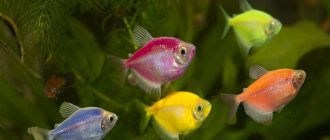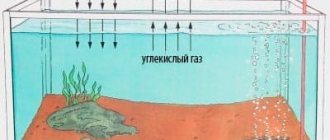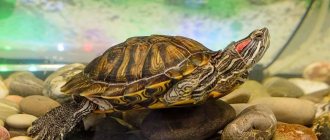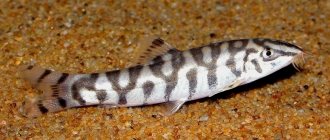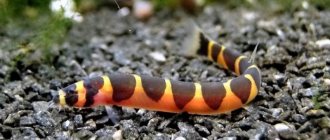- Wild animals
- >>
- Amphibians
The axolotl is an amazing, very unusual species of living creatures. Another name is aquarium dragon. This is due to the fact that cunning, dexterity and agility of animals are often bred as aquarium inhabitants. They represent the larval stage of development of tailed amphibians.
Today they are a rather rare species that is threatened with complete extinction. It was this type of living creatures that inspired cartoonists to create cute and bright images of dragons, which they closely resemble in reality.
Origin of the species and description
Photo: Axolotl
The axolotl is considered a chordate amphibian. It is a representative of the order of tailed amphibians, the Ambystoma family, and the genus of axolotls. This animal belongs to the Mexican Ambystoma species. This species, as well as any other species of ambystome, are amazing creatures characterized by neoteny. Translated from ancient Greek, this unique ability is interpreted as “endless youth.”
The incredible ability of axolotls lies in the ability to exist throughout their lives as a larva without ever turning into an adult form. They are not characterized by metamorphosis. This is due to the specific structure of the thyroid gland. It practically does not synthesize iodine, which acts as an activator of metamorphosis.
Axolotl video:
Scientists and researchers still cannot come to a consensus and formulate a hypothesis about the origin and evolution of aquatic dinosaurs. It is known that the name of these amphibians was borrowed from the ancient Greeks, or rather from the Aztecs, who called these dragonets “water dogs.”
According to the legend of the ancient Aztecs, there once existed an eternally young and beautiful God of weather on earth. His name was Xolotl. He was characterized by cunning, intelligence, dexterity and deceit. And so the people, who in those distant times existed side by side with the Gods, got tired of his resourcefulness and deceit and decided to teach him a lesson. However, God Xolotl was much more cunning than people. He turned into an axolotl and hid from his ill-wishers in the depths of the sea.
According to research, scientists suggest that this form of living beings inhabited the earth more than 10 million years ago. Today, only two species are found in natural conditions: tiger and Mexican ambystoma, as well as two forms: neotenic, or larval, and terrestrial, sexually mature adult.
Content
- 1 Aquarium for axolotl
- 2 Feeding the axolotl
- 3 Axolotl compatibility
- 4 Photos of axolotls
- 5 Sex determination and reproduction of axolotls
- 6 Diseases of axolotls
- 7 Video about axolotls
Axolotl (Ambystoma mexicanum): larva.
- Other names: Axolotl, "water dog", "water monster, Ambystoma mexicanum, Ambystoma tigrinum.
- Origin: Central Mexico.
- Size: up to 23 cm.
- Temperature: 18-20 °C.
- Water parameters: pH 6-8, dGH 7-20 °.
- Lighting: Doesn't matter.
- Behavior: predatory, nocturnal.
- Growth rate: extremely slow.
- Additional information: Considered an endangered species.
- Content difficulty: difficult!
Axolotl (Axolotl, Ambystoma mexicanum)
— The permanent form of the larvae of some species of ambystoma amphibians (salamanders), most often the Mexican (Ambystoma mexicanum) or Tiger (Ambystoma tigrinum). Much less common are the larvae of Ambystoma rosaceum and Ambystoma dumerilii. Without transitioning to an adult form, an amphibian is able to live its entire life, reach maturity and bear offspring. A cute, “smiling” larva, similar to Stitch (from the cartoon and therefore loved by small children), has one fin-comb running from the head along the back and completely bends around the tail to the cloaca, four legs and external gills, three on each side, on large, square head. It remains in this form until it is placed in dry and cold conditions, after which the morph begins, which in captivity most often ends in the death of the individual.
- Axolotl Ambystoma Dumeril
- Pink Ambystoma Axolotl
Axolotls live in aquariums for up to 15 years!
They are double-breathing animals and can breathe through both gills and lungs. But with prolonged breathing with the lungs, the gills can lose their function and atrophy.
Ambystoma tigrinum mavortium is an adult after morph.
Axolotls are conventionally divided according to color into three forms. Natural – dark with spots*. White - not albinos. And actually “albs” are albinos. The white form differs from the “albs” by the presence of a patterned pattern on the dorsal (dorsal) surface of the body (appears with age; young axolotls may not have such a pattern), less red gill filaments and brown (normal color) eyes. “Albs”, respectively, without a pattern, with scarlet gills and red eyes (clearly visible if you shine a flashlight into the impudent axolotl’s snout). And the natural form of axolotls and the white color are also far from uniform. “Prirodniki” can be small-spotted, large-spotted, with a mesh pattern, brownish, greenish, black, almost gray-brown-crimson. The color depends on the population (or laboratory line) from which a particular axolotl comes, as well as on the conditions of detention and even the food on which it was raised. The white form can also be slightly different in color. From soft pink to brownish. The pattern on the back can also have different shades of dark tones.
Appearance and features
Photo: Home axolotl
Axolotl is the larval form of any Ambystoma. They are divided into two species, since these species are distinguished by the greatest ability for neoteny. The external characteristics of the axolotl make it look like a kind of toy, an animated dinosaur of reduced size. The salamander has a huge head relative to its body. On both sides there are three hair-covered antennas. These are the external gills. They can be either pressed to the body or raised.
Interesting fact: These amphibians have a unique structure of the respiratory system. They have lungs, like internal respiratory organs, and gills, like external ones. This allows them to feel comfortable both on land and in water.
The body is elongated, there are limbs and a tail. The skeleton will be replaced by cartilage tissue. It is especially tender and soft in young individuals. The head part is widened and rounded. A wide, flat mouth creates the feeling of a permanent smile. The oral cavity contains many small and sharp teeth. They perform the function of fixing caught prey. They are not suitable for chewing or separating food. There are small, round, black eyes on the head.
The body of the little newt is streamlined, smooth, elongated and slightly flattened. In the back area there is a longitudinal ridge that acts as a fin. There are also transverse stripes that give the appearance of a ringed body. There are two pairs of limbs. The front ones are four-toed, and the back ones are five-toed. The tail of a water dragon is very long. In total, it forms about five dozen cartilaginous vertebrae with the body. The tail part is highly mobile. This ability allows amphibians to move quickly in water.
The length of the axolotl's body is from 15 to 40 centimeters. The volume of the body is 13-20 centimeters, the weight of one individual does not exceed 350 grams. Sexual dimorphism is not very pronounced. Females are somewhat lighter and smaller than males, and also have a shorter tail. The color of a water dragon can be very diverse: brown, gray, green, and can have all sorts of patterns of various sizes on its body. Also, a salamander can have a light color with various markings on it, or completely white without patterns or markings of a different color.
Where does the axolotl live?
Photo: Amphibian axolotl
In natural conditions it is extremely rare. Mainly lives in the waters of the Mexican lakes Cholco and Xochimailco. They are located in Mexico City at an altitude of almost two thousand meters above sea level. In the region of the so-called floating islands there are the most optimal living and breeding conditions for water dragons.
Since the second half of the 19th century, collectors began to actively breed these amphibians at home. They are kept in captivity exclusively in aquarium conditions. Its size is selected based on the number of individuals. If small newts are of different ages, it is better to keep them separately, since stronger individuals will start fights and oppress, taking food from weaker ones. On average, young water dragons need to be kept in conditions with a volume of fifty liters for each. Subsequently, when they grow up, it is necessary to provide such space for each of them.
A person who decides to keep a salamander at home must equip the aquarium in such a way as to create conditions as close as possible to natural ones. It is imperative to ensure the presence of houses or shelters, and line the bottom with soil, without which the axolotl cannot exist. He also needs natural light. When choosing soil, it is better not to use sand or small stones. It is better to give preference to pebbles that the amphibian cannot swallow.
If several water dragons live in an aquarium, it is necessary to equip such a number of houses and shelter so that each of them can choose.
What can be used as shelters:
- Pots;
- Stone boulders;
- Wooden driftwood;
- Artificial ceramic, clay houses;
- Cracked coconuts.
It is necessary to take into account that it is better to place the aquarium away from the source of noise, as well as a computer, TV, and bright artificial light. The optimal water temperature should be ensured. The most suitable option is 13-18 degrees. Water that warms up to 20 degrees or higher can cause serious illness and even death of the salamander.
Description and appearance
The Ambystoma larva, which, as mentioned above, lives only in Mexico at an altitude of 2,290 m above sea level, is a stocky salamander whose body length from the tip of the muzzle to the tail is usually 9-35 cm. Males have larger body sizes than females , due to the longer tail.
Males are usually larger than females due to their longer tail
There are two forms of ambistoma:
- neotenic (this is the axolotl itself - a larva that lives in water and has external gills);
- terrestrial (fully developed, smaller gills).
The length of an adult axolotl can reach 45 cm, but, as a rule, on average it is 23 cm (individuals larger than 30 cm are rare). What is characteristic is that they reach sexual maturity while still in the larval state.
Distinctive external features: large external gills (three processes on the sides of the head), small teeth (thanks to them, amphibians hold prey without tearing them apart). Color varies from black to white, including various variations of brown, brown, and gray. Although in nature, light-colored axolotls are extremely rare, since they are more visible and vulnerable.
Neoteny Ambystoma remains a predator, despite the “eternal period of youth”
What is the lifespan of an axolotl ? They live up to 20 years, but in an aquarium the duration is about 10 years.
Having lost his gills or part of his tail, the smiling dinosaur grows them back in record time
What does axolotl eat?
Photo: Axolotl at home
Young amphibians use small mollusks, crustaceans and other ciliates as a food source.
Mature individuals happily eat:
- larvae;
- earthworms;
- snails;
- cyclops;
- dophnium;
- crickets;
- mussels;
- bloodworm;
- paramecium;
- meat;
- fish.
Important information. When kept in aquarium conditions, it is not recommended to feed water dragons with amphibian meat. This product contains a large amount of protein, which is not absorbed by the axolotl’s digestive system.
You can use types of food that are intended for predator fish. In aquarium conditions, this is the most acceptable option, since it is not advisable to simply throw insects into the water for predators, because they need an imitation of hunting. Ready-made food has the ability to slowly sink to the bottom. Thanks to this, the water dragon has time to absorb it before sinking to the bottom. If you prefer to feed them non-living insects, it is better to do this with tweezers, since the axolotl uses its jaws only to fix a food source that is moving.
If food falls to the bottom of the aquarium and the amphibians do not have time to eat it, it must be removed immediately so that it does not pollute the aquarium or spoil the quality of the water.
The main source of food in natural conditions is zooplankton, small fish, and insects that live in the aquatic environment. It can easily feed on the limbs or other parts of the body of its fellows. To get them, the axolotl hunts. It chooses a secluded place for an ambush, catches the direction and rhythm of water flows, and when a potential victim approaches, makes a sharp lunge in its direction and grabs it with its wide open mouth.
These amphibians do not chew, so they swallow food completely. The process of digesting food takes several days. In the absence of a food source, water dragons can easily exist without food for several weeks, and still feel quite comfortable.
Feeding the axolotl
Ambystoma feeds on worms, large bloodworms, and small fish (rasboras, zebrafish, guppies). At home, you should feed frozen shrimp, sliced squid, scallops and marine fish species, or earthworms. Food should be refrigerated and served with tweezers or on a peak, as axolotls have difficulty lifting food from the bottom. Avoid feeding red meat and dry food. Uneaten foods should be removed. Up to six months they are fed daily, then they switch to feeding once every 3-4 days. Hungry individuals are capable of biting each other and even snatching off entire limbs.
An axolotl is capable of growing (regenerating) any limb and even part of its organs!
Features of character and lifestyle
Photo: Axolotl animal
The axolotl prefers to stay in clean water. It is in such water that they breathe mainly through gills. On land or in polluted water, the lungs are involved in breathing, and the gills partially stop performing their function and may atrophy. When exposed to favorable living conditions, the gills grow back and can once again perform their functions.
Under natural conditions, they prefer a hidden, solitary lifestyle. They are most active at night.
Amphibians are calm and leisurely, although they can move quite quickly in the water surface, raking with their forelimbs. During the hunt, they always choose a very advantageous position, since the salamander’s eyes are designed in such a way that they do not see anything below the level of their body.
Sometimes they can simply hang in the water, following the current, slightly moving their paws. The long tail plays an important role in maintaining balance and direction of movement.
Interesting fact. Nature has awarded water dragons with the amazing ability to regenerate not only cells and tissues, but also lost tails, limbs and even internal organs!
This amazing ability has aroused keen interest among researchers. The axolotl was caught in huge numbers for research and numerous laboratory experiments. This ability also allows you to quickly recover from fights, during which animals tear off each other’s limbs and tails and cause serious damage.
Rules of care and maintenance
The aquarium is selected depending on the size of the individual that will live in it (minimum volume 200 liters). The presence of atmospheric air is important for fish. The pond is decorated with stones, driftwood, and any aquatic plants.
We recommend reading
Aquarium fish parrots
Maintain a temperature of 24-29 degrees, filter and change the water weekly; Some polypterus jump out of tanks, so you should pay careful attention to the arrangement of the container.
Sand or gravel is suitable for soil. Permissible hardness and acidity of water: 7-20 dH and 6.2-8.0 pH.
Polypterus are predators, so the basis of nutrition is protein foods:
- raw heart (beef);
- fry;
- bloodworm;
- shrimps;
- worms;
- mussels
However, it is best to give small live fish, since the dragon needs to hunt. Food is given 2 times a day at night or at night, since the fish go out in search of food at this time.
Social structure and reproduction
Photo: Mexican axolotl
The water dragon reproduces well in natural conditions and in captivity in an aquarium. The breeding season has a seasonal relationship. Offspring are hatched in spring and autumn. Individuals of different sexes who are about to enter into mating relations organize real mating games with the onset of darkness. After this, the male deposits spermatophotes in the ground. Then the female collects them and lays unfertilized eggs on them, or draws them in with the cloaca. A day later, she lays the fertilized eggs on various aquatic vegetation or artificial objects in the aquarium.
The beginning of the breeding season in natural conditions is a decrease in water temperature.
Two to three weeks after the fertilized eggs are laid, small, barely noticeable fry hatch. Externally, they resemble tadpoles, or small fish. Their size does not exceed the size of a small pea. Their length does not exceed one and a half centimeters, there are no paws. Limbs do not grow at the same time. The front legs appear only after 90 days, the hind legs after a week. When kept in artificial conditions, the fry need to change the water daily, filter it, and feed it with small larvae, bloodworms, and small worms.
The period of puberty begins after reaching ten to eleven months. They produce offspring best when they are two to three years old. Individuals older than five years reproduce much worse. The average life expectancy in natural conditions is 13-14 years. With good care in captivity, life expectancy almost doubles.
Description of the axolotl
Mature individuals can grow up to 45 cm in length, but most often their size does not exceed 25-30 cm. The amphibian weighs about 300 grams. The animal's rounded, somewhat elongated body is covered with delicate skin. The water dragon has 4 legs, and its flat and long tail makes it an excellent swimmer. On the large, wide head, small black eyes and a wide, constantly smiling mouth stand out.
Dark axolotls are found in nature. Individuals with golden yellow, yellow-brown, black, pink or white colors are bred in aquariums. There are also albinos with red eyes.
Natural enemies of axolotls
Photo: Amphibian axolotl
Many reasons contributed to the decline in axolotl numbers. One of them is the destruction of natural habitats and pollution of water sources. Changing climatic conditions, warming and rising water temperatures cause death and numerous diseases of amphibians.
The second significant reason for the decline in numbers is diseases, to which salamanders are very susceptible. They tend to suffer from very serious diseases that cause death: ascites, anorexia, metabolic disorders, hypovitamnosis, intestinal obstruction, digestive disorders, etc.
Humans played a major role in the status of the population. Amphibians were caught in huge quantities for the purpose of conducting experiments and research on the regeneration of lost organs and limbs. In addition, human activity contributes to the pollution of natural water bodies. Crystal clear lake water becomes dirty. This leads to sickness and death of water dragons, as they react very strongly to water quality.
In addition, larger and more predatory fish hunted axolotls: telapia, carp. They eat large quantities of not only the amphibians themselves, but also their eggs, which thus do not have time to turn into fry.
Population and species status
Photo: Axolotl
Today, the axolotl is practically never found in nature, in its natural habitat. On the territory of the Russian Federation it is found exclusively in aquarium conditions. Previously, the habitat of amphibians was quite wide. Then, as the number of axolotls declined, their natural habitat area also decreased. Today they are not found anywhere except two Mexican lakes.
Researchers from the Autonomous University of Mexico made calculations and found that there are no more than 800 - 1300 left in nature. The exact number is unknown. This means that if special programs are not developed to save and preserve the species, it may completely disappear. However, researchers claim that several hundred thousand successfully live and reproduce in artificially created conditions within the aquarium.
Over the past ten years, the number of water dragons in their natural habitat has decreased significantly. Researchers say that in 1998, there were just over five thousand individuals for every square kilometer of Mexican lakes. In 2003, the same area accounted for no more than a thousand individuals. In 2008, the same area accounted for no more than a hundred individuals. Thus, the population has decreased by more than 50 times in just ten years.


